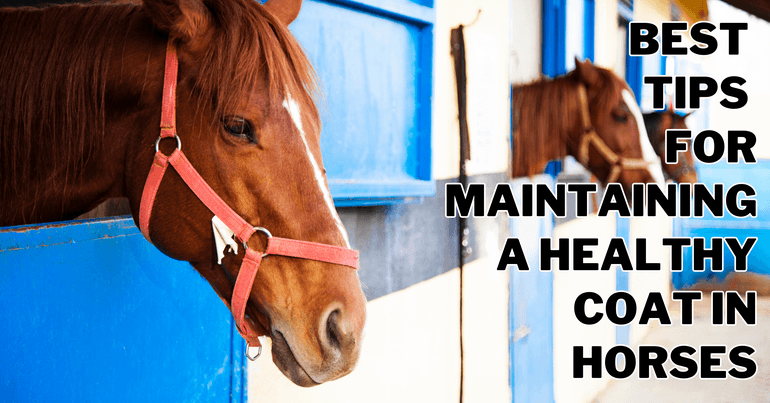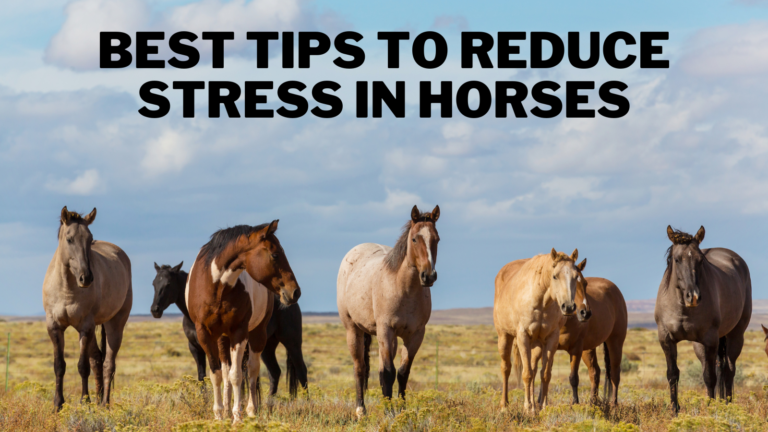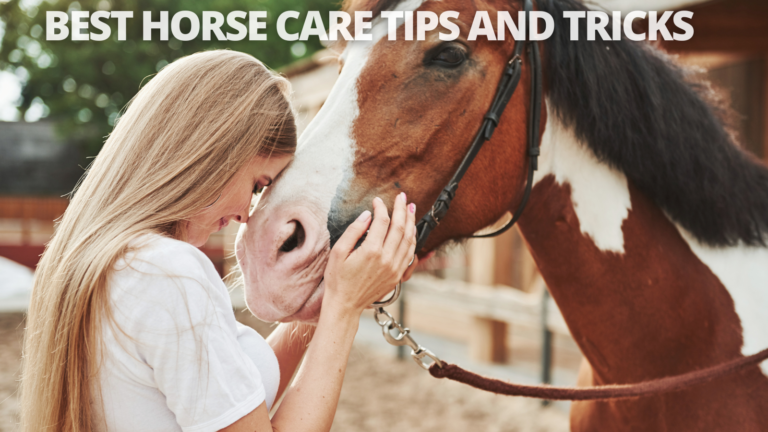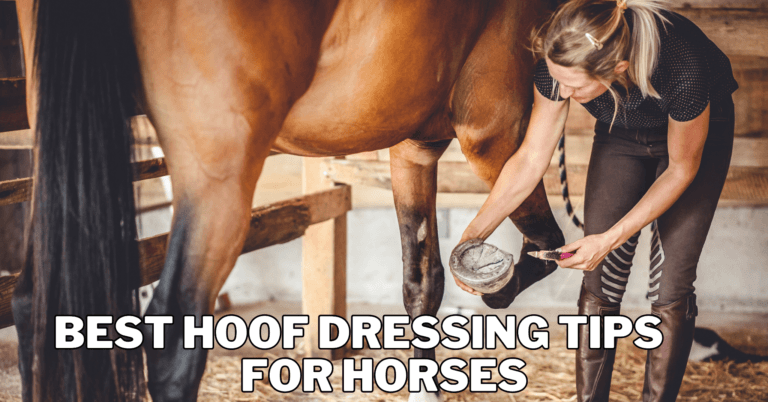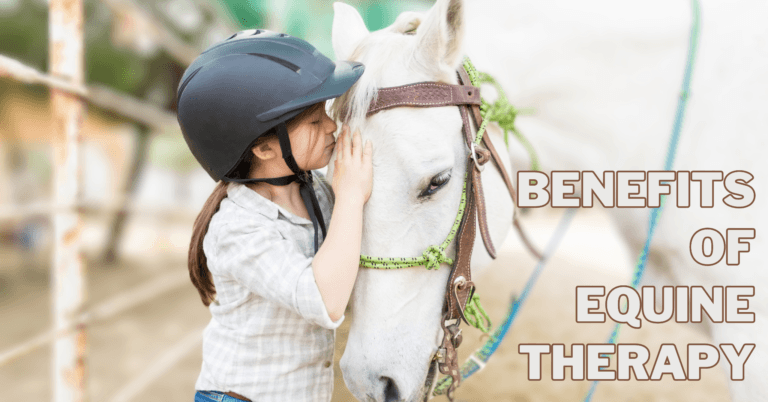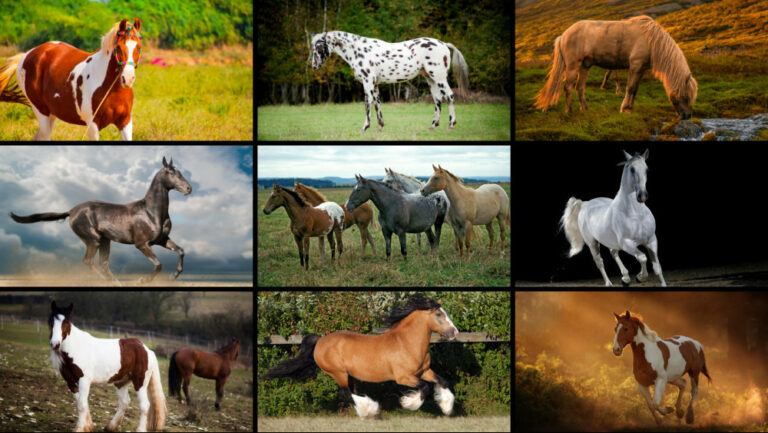Best Tips For Maintaining A Healthy Coat In Horses
Owning and caring for a horse can be a rewarding experience, and one essential aspect of horse care is maintaining a healthy and beautiful coat.
A well-groomed and lustrous coat enhances the horse's appearance and indicates overall health and well-being. Proper coat maintenance involves grooming techniques, nutrition, and general horse care practices.
Whether you are a seasoned equestrian or a new horse owner, understanding the tips for maintaining your horse's coat is crucial for ensuring their happiness and optimal health.
This article will explore effective strategies and practical advice for achieving and maintaining a radiant coat for your equine companion.
Did you know many people build blogs about horses and turn them into online businesses? 🌟 Learn how to inside Wealthy Affiliate.
The Benefits Of Maintaining A Healthy Coat In Horses
Maintaining a healthy coat in horses is not just about aesthetics; it also offers numerous benefits that contribute to the horse's overall health and well-being.
Regular grooming removes dirt, debris, and dead skin cells from the horse's coat. This prevents the accumulation of irritants that could lead to skin conditions or infections, promoting a healthier skin environment.
Grooming involves brushing and massaging the horse's coat, stimulating blood flow to the skin. Improved circulation aids in distributing nutrients and oxygen, supporting healthier skin and coat growth.
Proper grooming helps manage the shedding process, particularly during seasonal changes. Removing loose hairs prevents excessive shedding and reduces the risk of horses ingesting hairballs, which can lead to digestive issues.
Regular grooming sessions allow horse owners to inspect the coat, skin, and body closely for abnormalities, wounds, or signs of parasites.
Detecting potential health issues early can prompt veterinary intervention, ensuring better treatment outcomes. Grooming sessions provide an excellent opportunity for bonding between the horse and the owner or handler.
Through gentle grooming, horses learn to trust and feel more relaxed in the presence of humans.
Regular grooming and proper nutrition contribute to a shiny and lustrous coat. A healthy coat reflects good overall health and can enhance the horse's appearance during competitions or shows.
A well-maintained coat helps regulate the horse's body temperature. In colder weather, the coat acts as an insulator, retaining body heat, while in warmer weather, a clean coat allows for better cooling through sweating.
Regular grooming prevents the coat from becoming matted or tangled, which can be uncomfortable for the horse and challenging to manage.
Proper grooming helps keep the mane and tail neat and tangle-free, reducing the risk of breakage and making grooming and braiding easier.
A horse with a well-groomed coat presents a positive and appealing image to others, reflecting the care and attention given to the animal's well-being.
Maintaining a healthy coat in horses offers numerous benefits, from promoting skin health and circulation to aiding shedding management and fostering trust between horse and owner.
Regular grooming and attentive care contribute to the horse's physical health and enhance the overall experience of owning and caring for these magnificent animals.
Tips For Maintaining A Healthy Coat In Horses
Maintaining a healthy coat in horses requires a combination of regular grooming, proper nutrition, and general care. Here are some essential tips and points to help you keep your horse's coat healthy and radiant:
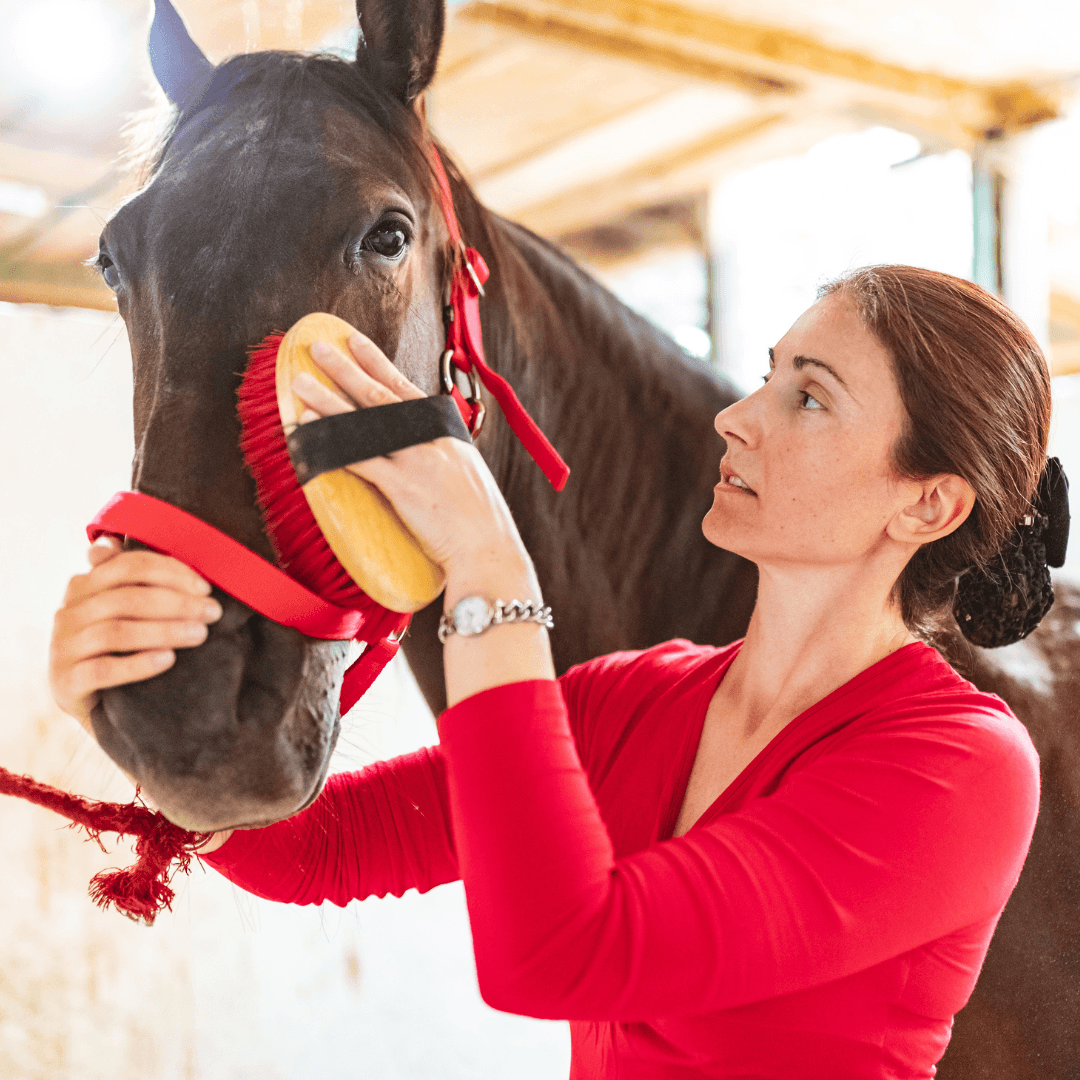
1. Regular Horse Grooming
Regular grooming is fundamental to maintaining a horse's coat and overall health. Daily grooming sessions help keep the coat clean and free from dirt and debris accumulating during daily activities.
Use a soft-bristled brush for daily grooming. It is gentle on the horse's skin and effectively removes surface dirt and loose hair.
This regular brushing also stimulates blood circulation, promoting healthier hair growth and a shinier coat.
For more thorough cleaning, incorporate an awesome brush designed to remove stubborn dirt and debris that may be lodged deeper in the coat.
Be thorough but gentle, paying special attention to sensitive areas like the face, legs, and belly. When grooming the face, use a softer brush or a grooming mitt to avoid causing any discomfort to the horse.
For the legs, carefully brush around the joints and fetlocks, removing any dirt that may have accumulated in these areas.
Grooming keeps the coat looking clean and presentable and allows you to closely inspect the horse's skin for any signs of irritation, wounds, or conditions that may require attention.
Moreover, grooming sessions provide valuable bonding time between the horse and the handler, fostering trust and building a stronger relationship.
Regular grooming is essential to ensure your horse's coat remains healthy, vibrant, and free from any potential skin issues.
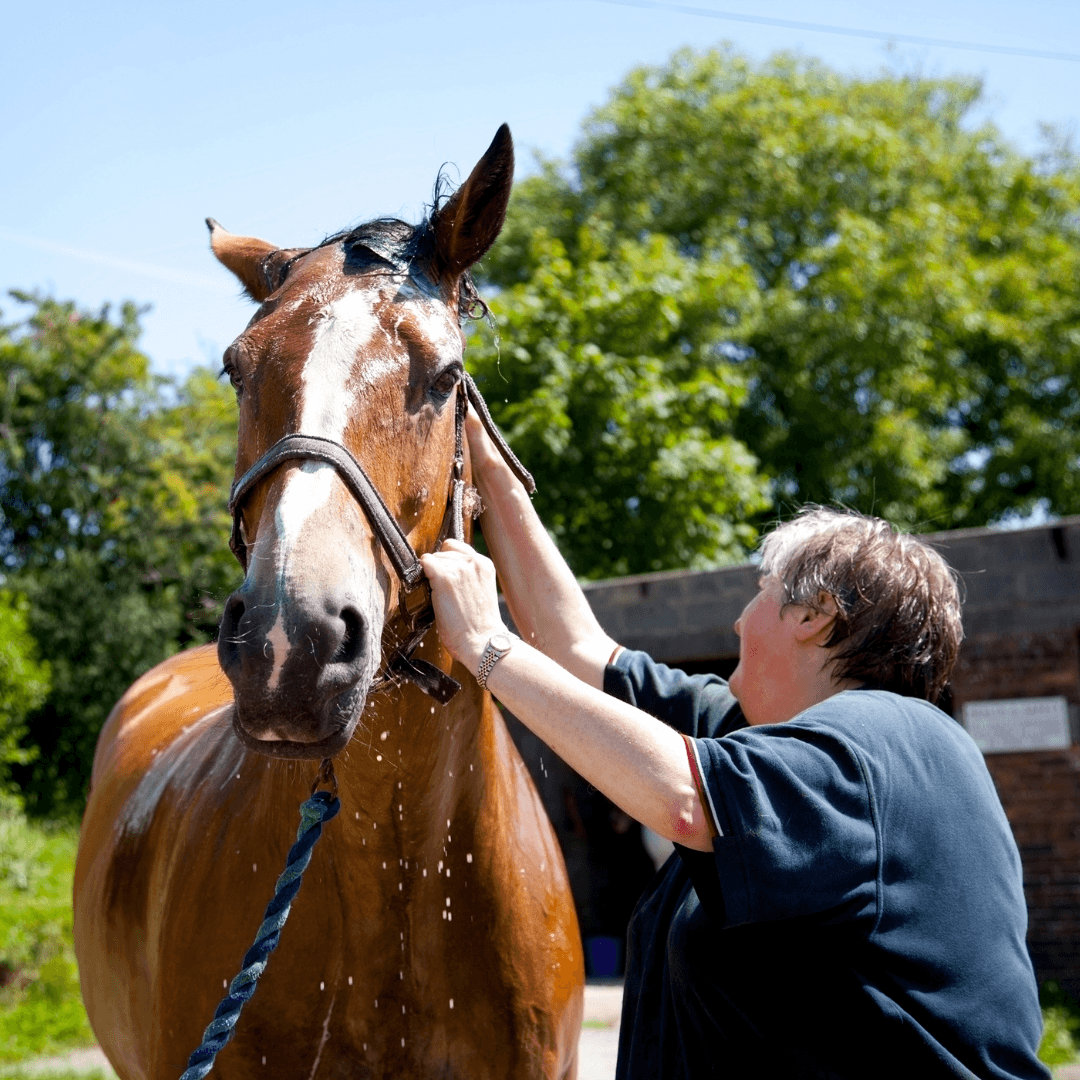
2. Bathing
Bathing is an essential aspect of horse coat maintenance, particularly for deep cleaning and removing stubborn dirt or sweat after intense workouts or when the horse gets particularly dirty.
While regular grooming can handle everyday dirt and debris, bathing provides a thorough cleansing that rejuvenates the coat and keeps it looking its best.
It is essential to use horse-specific shampoos and conditioners during baths to avoid stripping the coat of its natural oils, which play a crucial role in keeping the hair healthy and shiny.
Before bathing, thoroughly brush the horse's coat to remove loose dirt and hair, ensuring a more effective and even cleaning process.
Use lukewarm water and a soft sponge or cloth to gently wash the horse's entire body, focusing on sensitive areas like the face and underbelly.
When applying shampoo, focus on areas that accumulate more dirt, such as the mane, tail, and legs. Rinse thoroughly to ensure no residue is left behind.
After the bath, use a horse-specific conditioner to maintain the coat's natural oils and provide extra nourishment.
Avoid over-bathing, as excessive bathing can lead to dryness and skin irritation. Instead, opt for occasional baths as needed, considering weather conditions and the horse's activities.
By practicing proper bathing techniques and using horse-specific products, you can help keep your horse's coat clean, healthy, and lustrous.
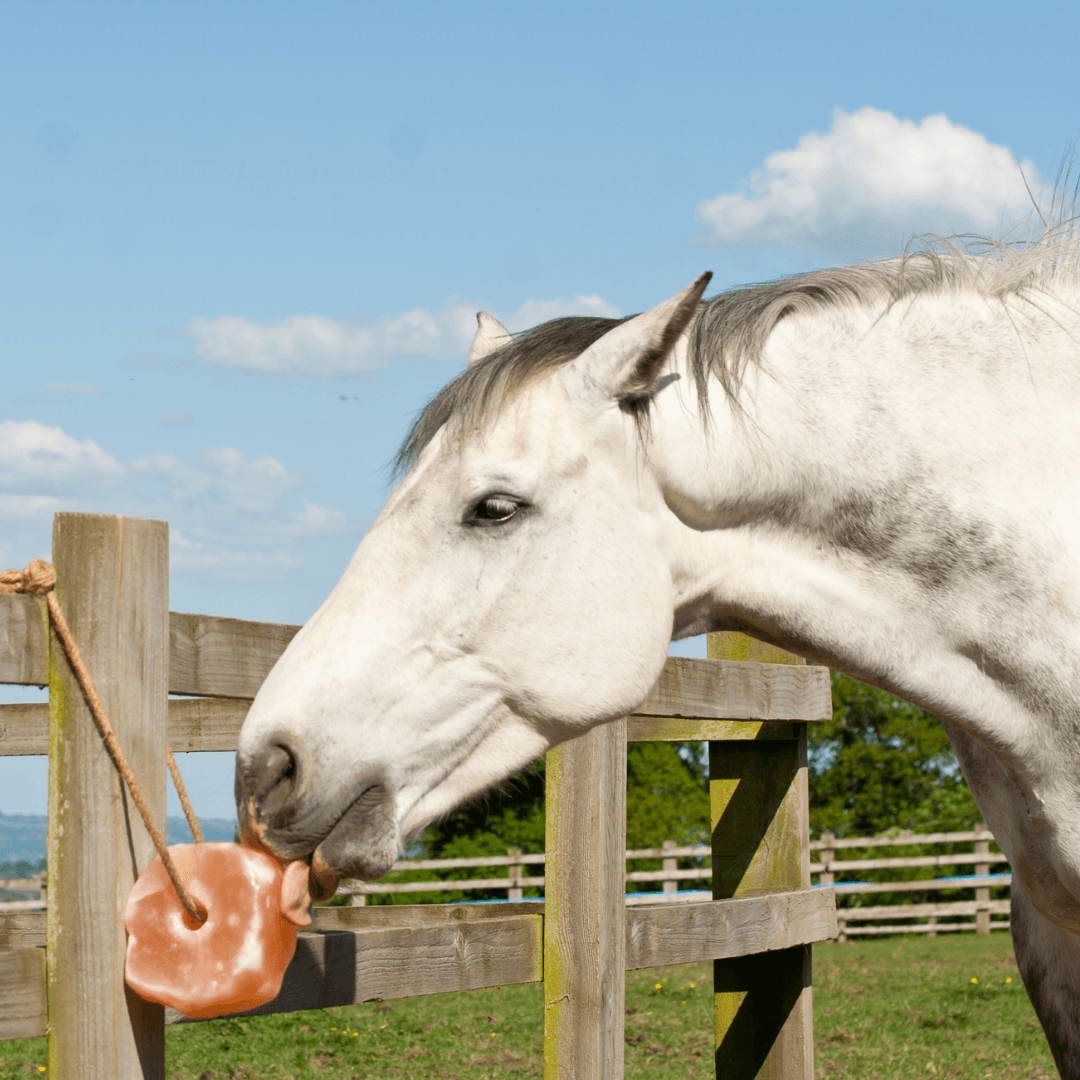
3. Equine Nutrition
Proper nutrition is a cornerstone of maintaining a healthy and vibrant coat for your horse. A well-balanced diet rich in key elements, including protein, vitamins, and minerals, is essential for healthy hair growth and encouraging a beautiful coat.
Horses need protein because it gives their hair the building blocks to grow strong and healthy. High-quality protein sources such as soybean meal or alfalfa can contribute to the overall health of the coat.
Vitamins and minerals also play critical roles in maintaining a glossy coat. Vitamin A, for example, is essential for skin health and cell regeneration, while biotin supports hoof and hair quality.
Including vitamin-rich ingredients like carrots or sweet potatoes and mineral supplements in the horse's diet can help meet these nutritional needs.
In addition to protein, vitamins, and minerals, horses require a balance of carbohydrates and fats for energy, which further supports coat health.
Essential fatty acids, such as omega-3 and omega-6, contribute to skin health and can improve the coat's appearance by reducing dryness and promoting a shiny texture.
Ensure that your horse has access to clean and fresh water at all times, as proper hydration, including the condition of the coat, is essential for overall health.
Consulting with a veterinarian or equine nutritionist can help you tailor a diet that meets your horse's needs, promoting a glossy and healthy coat that reflects your horse's overall well-being.
🌟 Want to Share Your Passion for Horses Online?
🐴 Learn How to Start a Horse Blog with Wealthy Affiliate — Free, No Credit Card Needed
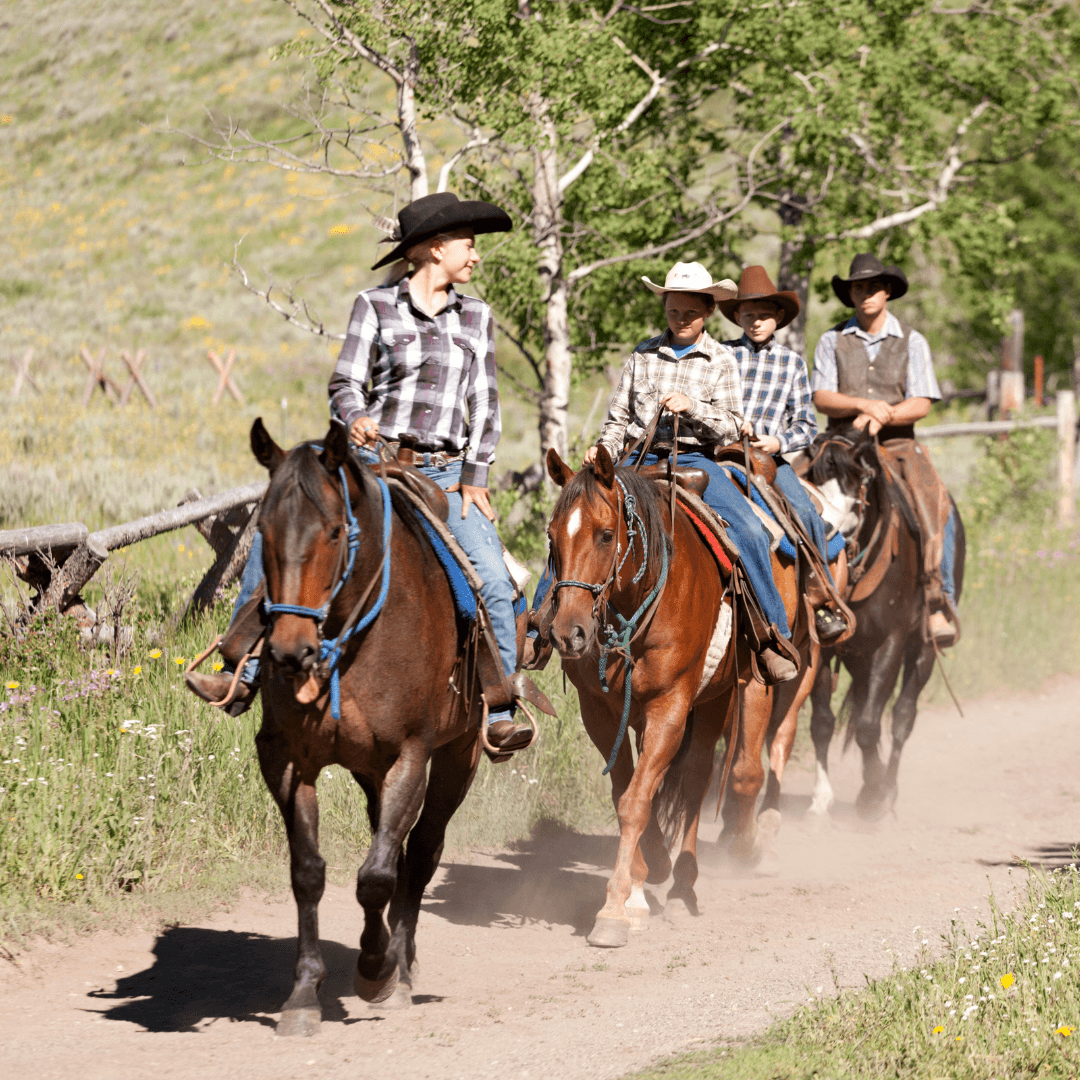
4. Regular Exercise
Regular exercise is vital for a horse's overall health and fitness and for preserving a healthy, shiny coat. It helps improve blood circulation throughout the horse's body, including the skin and hair follicles.
Better circulation means that essential nutrients and oxygen are delivered more efficiently to the hair follicles, promoting healthier hair growth and a shiny coat.
Exercise also encourages the release of endorphins, which can help manage stress levels in horses. Stress can hurt a horse's coat condition, leading to dullness, dryness, and even hair loss.
Regular exercise provides an outlet for pent-up energy and reduces anxiety, positively affecting the coat's appearance. Furthermore, exercise supports overall well-being, as a healthy horse is likelier to have a healthy coat.
The type and intensity of exercise can vary depending on the horse's age, fitness level, and specific training goals.
Regular exercise is key to promoting a vibrant and glossy coat for your horse, whether it's daily turnout in a pasture, regular riding sessions, or engaging in other forms of physical activity.
Always ensure that your horse is properly warmed up and cooled during exercise to minimize the risk of injury and stress.
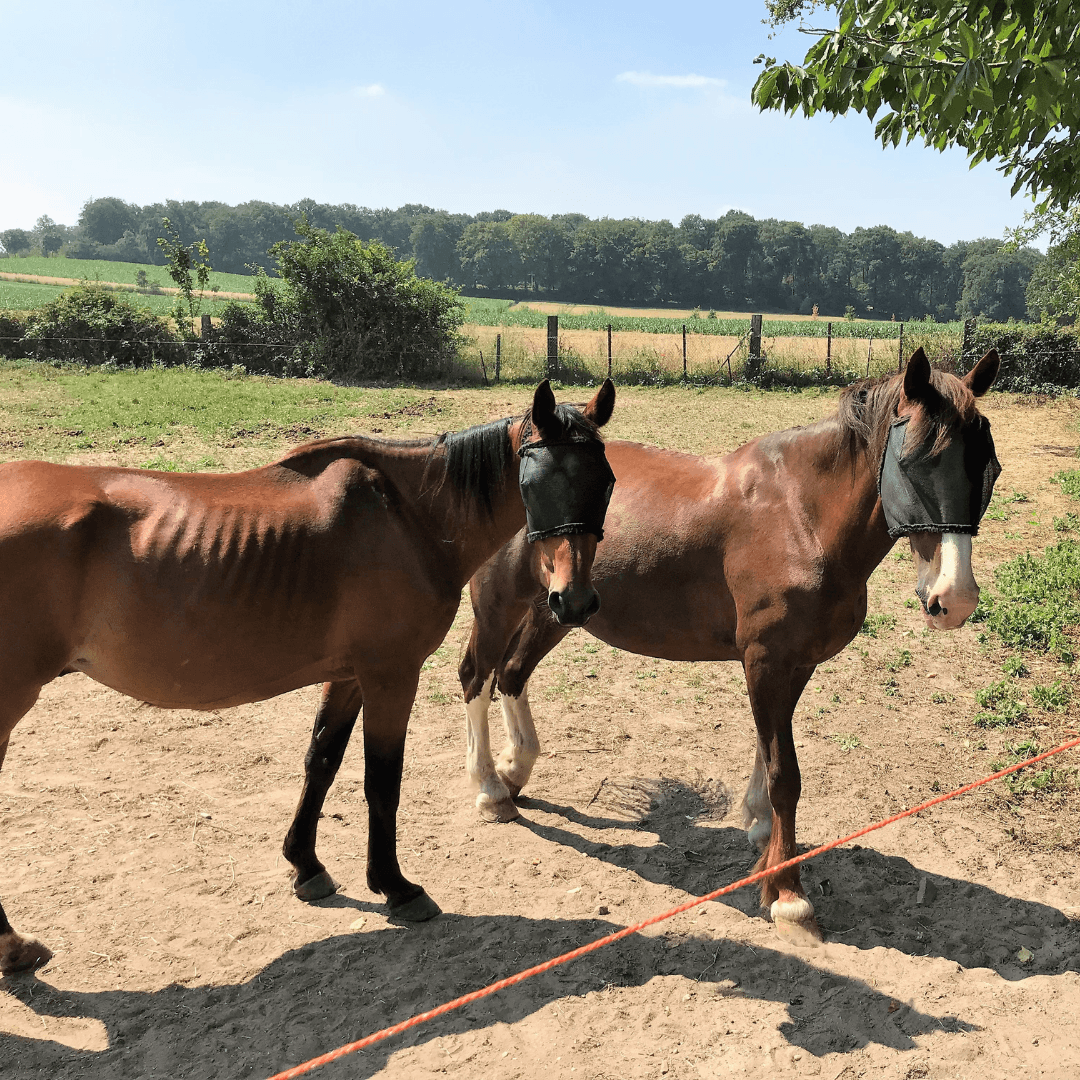
5. Sun Protection
Sun protection is essential for maintaining the health and vibrancy of your horse's coat. Prolonged exposure to the sun's harsh UV rays can lead to the coat's colour fading, especially in horses with darker or more vibrant coat shades.
Providing shade in the pasture or during turnout hours is an effective way to shield your horse from direct sunlight. Trees, shelters, or even specially designed sunshades can offer relief from the sun's intensity.
Another option for sun protection is using fly sheets or UV-blocking blankets. These lightweight coverings not only provide a physical barrier against the sun but also help to keep flies and other insects at bay.
Many fly sheets are designed with breathable materials that allow air circulation, preventing overheating during hot weather.
It's crucial to monitor your horse for signs of sunburn or skin irritation, especially on areas with thinner hair, such as the nose, ears, and white markings. In such cases, applying equine-safe sunscreen can offer additional protection.
Maintaining a consistent sun protection routine throughout the year, particularly during peak sunlight hours, will help preserve your horse's colour and overall health. Proactively providing sun protection ensures your horse's coat remains vibrant and in top condition.
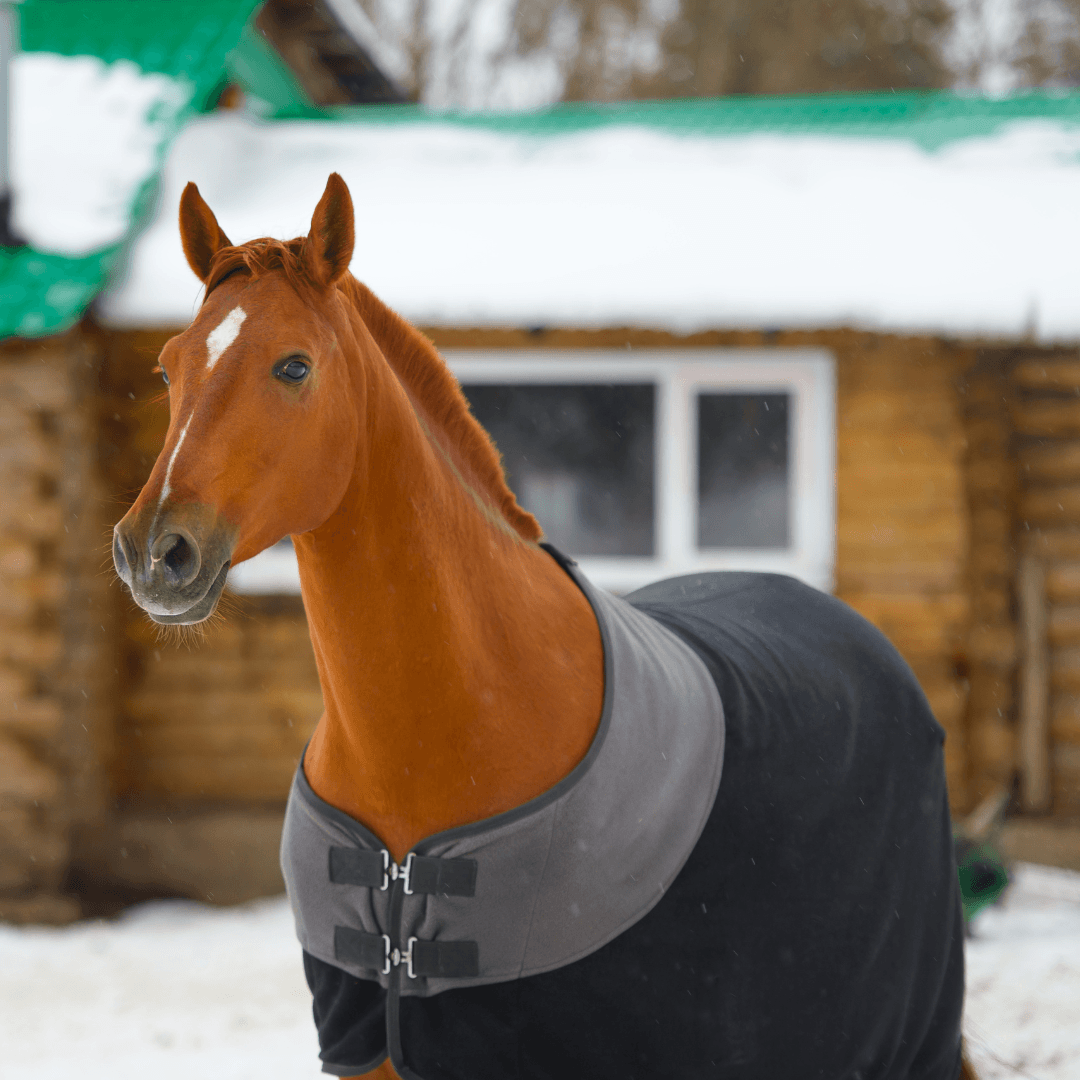
6. Proper Blanketing
Proper blanketing is crucial to maintaining your horse's coat, especially during colder weather. Blankets provide insulation and protect your horse from harsh elements, preventing the coat from becoming overly dirty or tangled due to adverse weather conditions.
When temperatures drop, it is essential to choose the appropriate weight of blankets based on your horse's needs and the climate in your region. Heavyweight blankets can help keep your horse warm and comfortable during colder months.
This is especially important for horses clipped or with thinner coats, as they may need extra protection from the cold. On milder days, using lighter or no blankets may be more suitable to prevent overheating and sweating.
Check your horse's blankets regularly for signs of wear or damage and ensure they fit properly to avoid rubbing or discomfort.
Proper blanketing also includes taking off and checking the blankets daily to monitor your horse's skin condition and coat health.
Blanketing can be adjusted based on weather changes, and it's crucial to be attentive to your horse's behaviour and body temperature to determine their comfort level.
Using appropriate blankets thoughtfully can help maintain your horse's coat in optimal condition and ensure its overall well-being throughout different seasons.
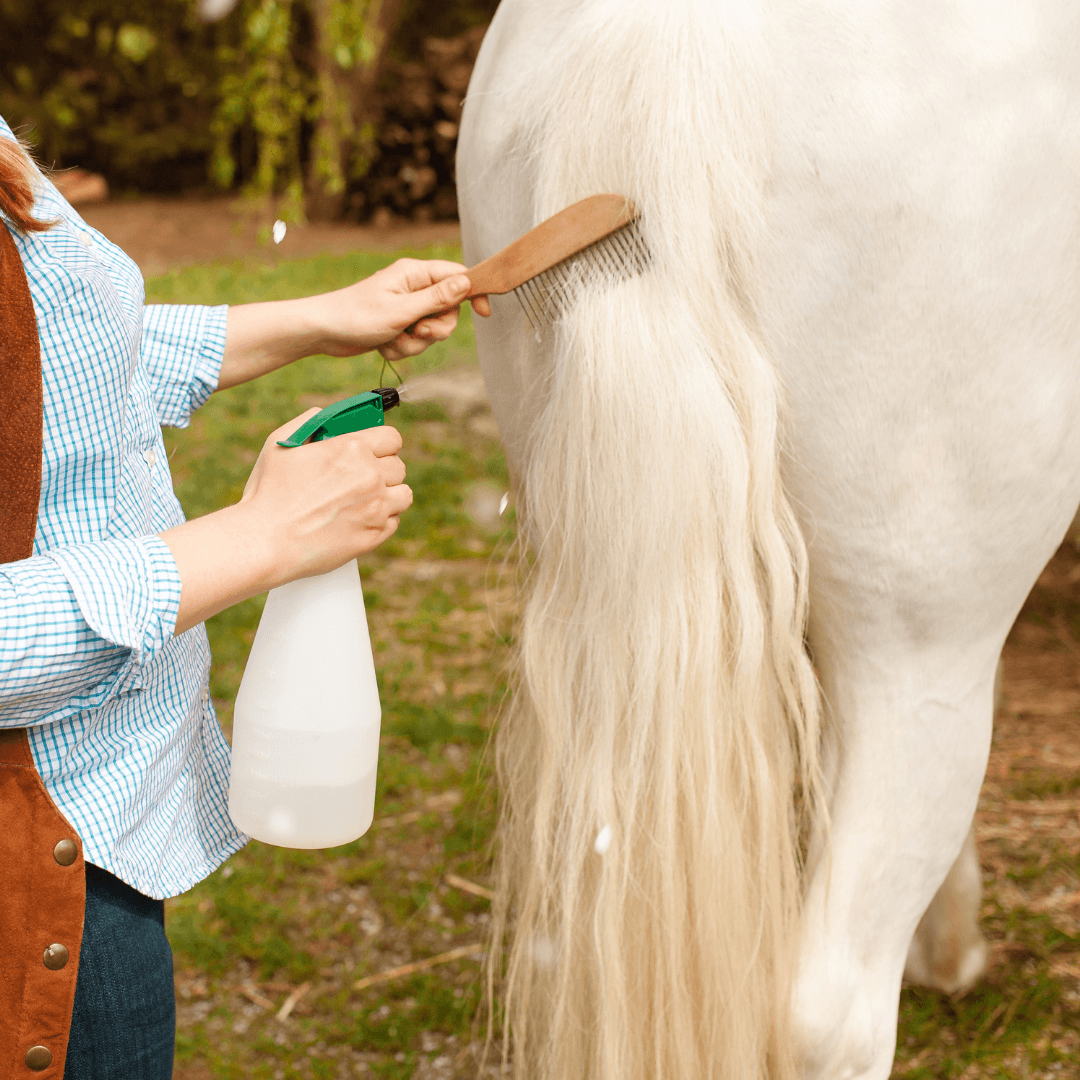
7. Mane And Tail Care
Mane and tail care are vital to maintaining a horse's coat and overall appearance. Regularly combing and detangling the mane and tail helps prevent mats and tangles from forming, which can lead to breakage and discomfort for the horse.
Using a wide-toothed comb or a specially designed mane and tail brush, gently work through any knots or snarls, starting from the ends and working your way up to the roots.
To make grooming easier, apply a detangler or leave-in conditioner to the mane and tail before combing.
These products help soften the hair, making it more manageable and reducing the risk of pulling and breakage during grooming sessions.
When applying detangler, it's essential to use a small amount and distribute it evenly through the hair to avoid excess buildup.
In addition to regular grooming, it's crucial to protect the mane and tail from environmental factors that can cause damage.
For example, consider using tail bags or wraps during turnout or when stabled to prevent tangling and breakage.
Additionally, be cautious when brushing the tail, as excessive force or rough handling can lead to hair loss and damage.
By incorporating consistent and gentle mane and tail care into your horse's grooming routine, you can help maintain their coat's health and appearance, ensuring that the mane and tail stay lustrous and beautiful.
Regular attention to mane and tail care keeps your horse looking its best and promotes a strong, healthy coat.
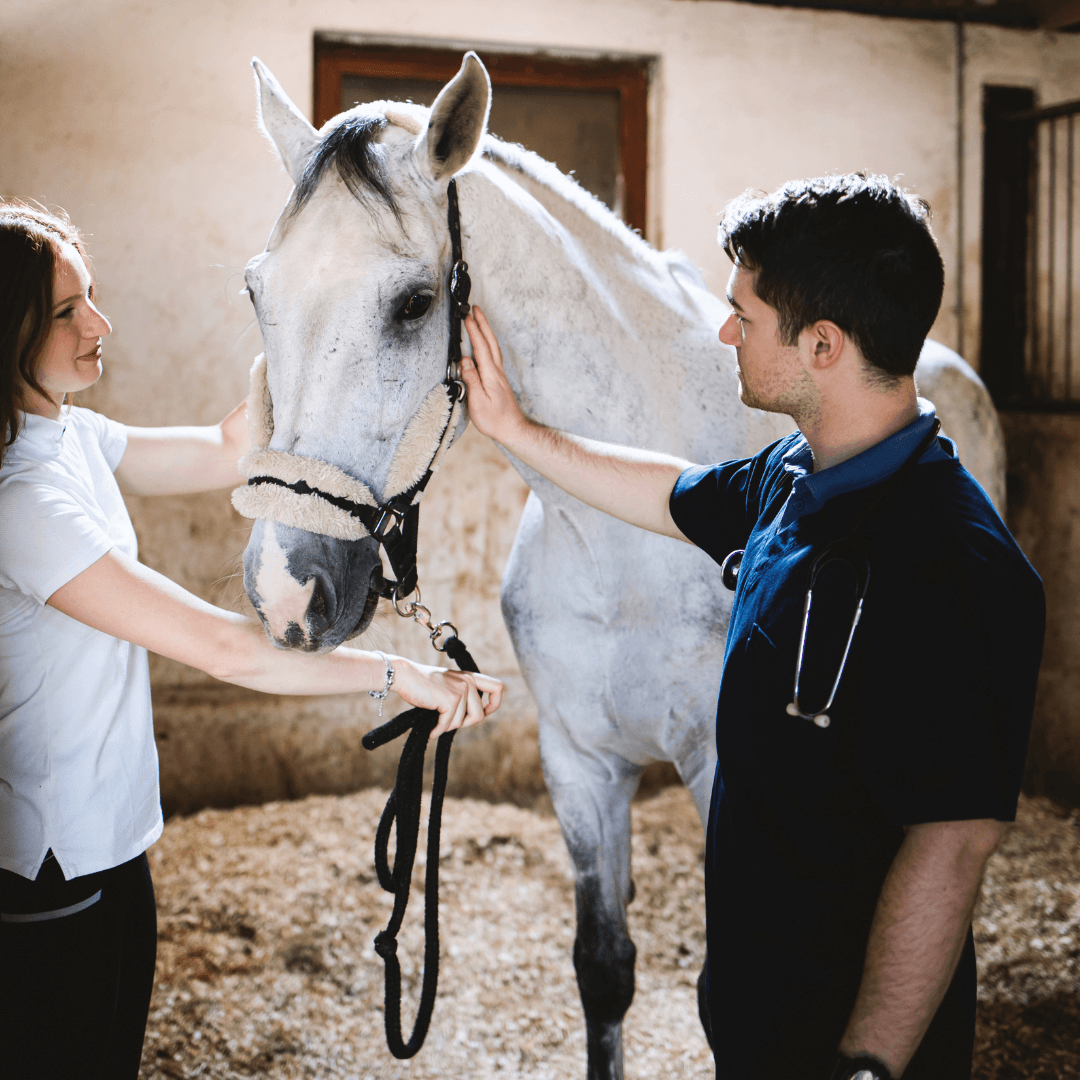
8. Regular Health Checks
Regular health checks are essential for maintaining your horse's coat and overall well-being. By scheduling routine veterinary check-ups, you can proactively monitor your horse's health, including its skin and coat condition.
During these visits, the veterinarian can assess the coat's appearance and look for abnormalities, such as dryness, excessive shedding, or skin irritations.
They can also check for any underlying health issues affecting the coat, such as nutritional deficiencies or skin infections.
Addressing health issues promptly is crucial to prevent further coat deterioration and ensure your horse's comfort and happiness.
Your veterinarian can guide the appropriate nutrition, supplements, or topical treatments to address any specific coat concerns.
Furthermore, routine health checks allow you to establish a baseline for your horse's coat condition, making it easier to notice any changes or potential problems in the future.
By working closely with your veterinarian and following their recommendations, you can help maintain your horse's coat in optimal condition and ensure their overall health and happiness for years to come.
Regular health checks and proactive care are vital components of responsible horse ownership and can contribute to a long, healthy, shiny coat for your equine companion.
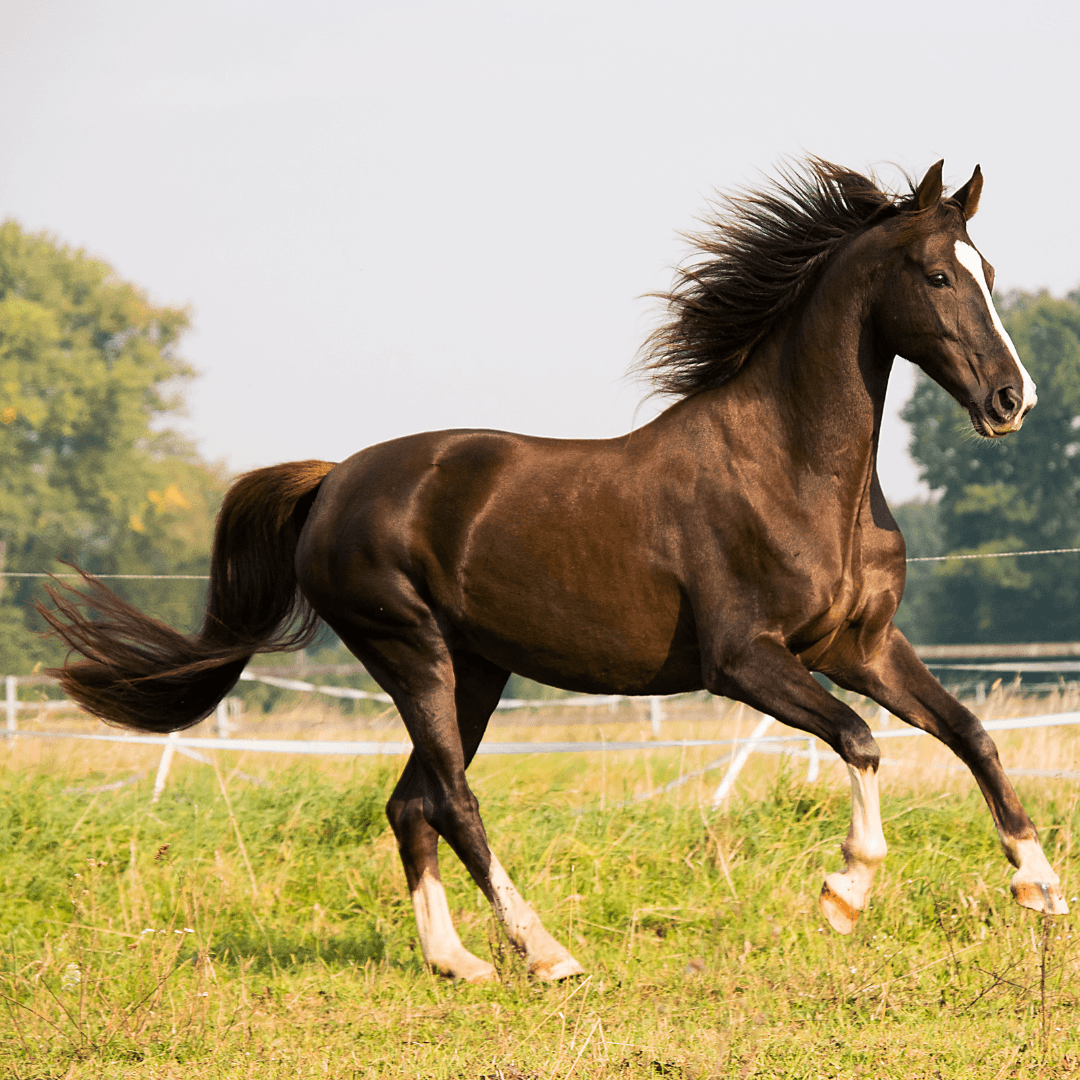
9. Stay Attentive
Staying attentive to your horse's coat is crucial for detecting potential skin issues early on. Regularly observe your horse's coat for any changes, such as patches of hair loss, redness, or excessive itching.
These could be signs of various skin problems, including allergies, fungal infections, or parasites. If you notice any abnormalities, it is essential to take prompt action and seek veterinary advice.
Skin issues can cause discomfort and distress to your horse, and addressing them promptly can prevent further complications.
Your veterinarian can comprehensively examine the underlying reason for the coat changes and suggest the best action. Dietary adjustments or topical treatments may sometimes be necessary to improve skin health.
In addition to visual inspection, pay attention to your horse's behaviour. Excessive itching or rubbing against objects may indicate skin irritation or discomfort.
Addressing the issue early can help prevent the condition from worsening and promote a healthy, lustrous coat.
Regular grooming sessions can also provide an opportunity to check for any changes in the coat and skin.
Comb through the hair and observe the skin closely, paying attention to sensitive or painful areas.
By staying attentive to your horse's coat and behaviour, you can ensure their comfort and well-being and promote a radiant, healthy coat that reflects their overall health.
Conclusion
In conclusion, maintaining your horse's coat is essential for their overall health, comfort, and appearance. Regular grooming, proper nutrition, and regular health checks are crucial in promoting a healthy and lustrous coat.
Incorporating these tips into your horse care routine will help keep your equine companion's coat in excellent condition, reflecting their overall well-being.
Additionally, staying attentive to any changes in the coat and promptly addressing any health issues ensures that your horse remains comfortable and happy.
Caring for your horse's coat enhances its appearance and strengthens your bond with your equine friend. A well-maintained coat reflects your horse's beauty and is a testament to your dedication as a responsible horse owner.
I trust you enjoyed this article on the Best Tips for Maintaining A Healthy Coat in Horses. Please stay tuned for more tips, guides, and inspiration about caring for and connecting with horses.
Take care!
— JeannetteZ
💬 Your Opinion Is Important To Me
Do you have thoughts, ideas, or questions? I’d love to hear from you. Please leave your comments below or email me directly at Jeannette@Close-To-Nature.org.
🐴 More Horse Reads
😌 More Stress Relief Reads
🐴 My #1 Recommendation For Online Success
See How Horse Lovers Create Online Businesses — Try WA Free (No Credit Card Needed)
Disclosure
This post may contain affiliate links. As an Amazon Associate and other affiliate programs, I earn from qualifying purchases at no extra cost to you. Please read my full affiliate disclosure.

